Medical Illustration: Merging Artistic Vision with Science
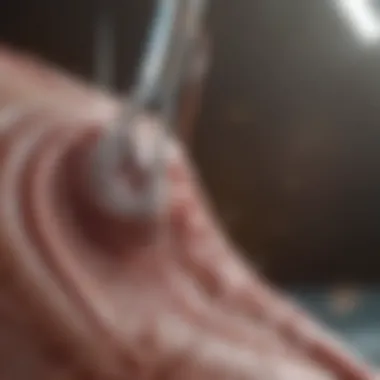
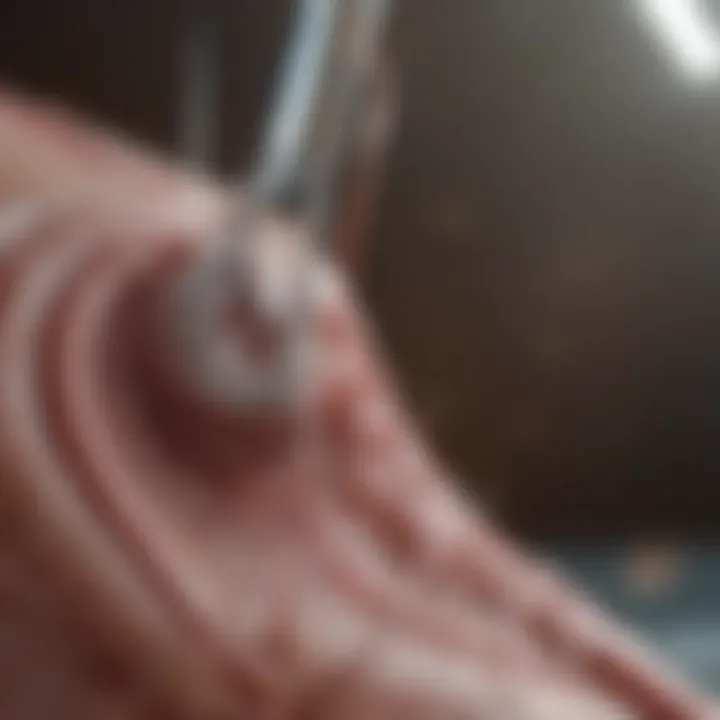
Intro
In the world of medical illustration, the interplay between art and science creates a powerful communication tool. Visual representations of complex biological systems help demystify intricate concepts for students, patients, and even professionals. Whether it’s a detailed anatomical chart, a digitally crafted model of a disease process, or a surgical procedure illustration, these works serve as a vital bridge.
The significance of medical illustrations goes beyond mere aesthetics; they function as pivotal resources in education, research, and clinical practice. By blending artistic talent with an in-depth understanding of biological mechanisms, medical illustrators craft images that speak volumes where words may fail.
As we embark on this exploration, we delve into the varied aspects of medical illustration—its historical context, its role in present-day practices, and the ethical considerations that shape its future in a rapidly evolving digital landscape. Each section offers insights not only about the craft itself but about its profound impact within the medical community.
Prelims to Medical Illustration
In the realm of medicine, where precision and clarity are paramount, medical illustration emerges as a vital bridge connecting the complex world of science with accessible visual representation. For students, researchers, educators, and medical professionals alike, understanding the intricacies of medical illustration can significantly elevate their approach to communication, education, and even patient care.
Definition and Scope
Medical illustration is a specialized field that encompasses the creation of visual representations of medical concepts, anatomical structures, and various biological processes. Unlike ordinary art, the focus here is on accurately depicting the intricacies of human anatomy while ensuring that the artwork serves a clear educational purpose.
The scope of medical illustration is expansive. It ranges from the meticulous depiction of patient anatomy for surgical purposes to the imaginative representations of disease pathologies. Here are some areas where medical illustration plays a critical role:
- Educational Materials: Creating visuals for textbooks and online resources that help demystify complex topics.
- Research Communication: Illustrating research findings to make them more digestible for both the scientific community and the general public.
- Clinical Applications: Assisting surgeons and healthcare providers by providing clear visualizations that support clinical decision-making.
History and Evolution
The roots of medical illustration can be traced back centuries, when artists like Leonardo da Vinci began to explore the human form and document it with remarkable accuracy. Over time, the field evolved significantly, influenced by technological advancements and an ever-increasing demand for detailed medical visuals.
Throughout history, we see shifts in styles and purposes:
- Ancient Illustrations: Early medical texts often relied on rough sketches that lacked precision but conveyed essential knowledge of herbal remedies and basic anatomical structure.
- The Renaissance Period: With artists like Andreas Vesalius leading the charge, medical illustration began to merge scientific inquiry with artistic expression. Vesalius's work, "De humani corporis fabrica," is particularly noteworthy for its meticulous attention to anatomical detail.
- Modern Era: The introduction of photography and digital technologies revolutionized medical illustration. Today, artists can use 3D modeling and digital rendering to create lifelike representations that offer unprecedented insight into the human body.
"Art is not a mirror held up to reality, but a hammer with which to shape it." - Bertolt Brecht
As we stand at the intersection of art and science, the evolution of medical illustration illustrates how far we've come, but it also signals the potential for further growth in this fascinating discipline.
The Role of Medical Illustrators
Understanding the critical role that medical illustrators play in the intersection of art and science is not just about appreciating their artistic talents. Rather, it's about recognizing how these professionals significantly influence the fields of education, research, and clinical practice. Their illustrations serve as vital tools that bridge communication gaps between complex scientific concepts and clear comprehension, a task that is essential for a wide array of stakeholders including students, healthcare professionals, and patients.
Education and Training
The road to becoming a proficient medical illustrator is not an easy one. It often requires an intense blend of artistic and scientific education. Most medical illustrators hold at least a bachelor’s degree in medical illustration or a related field, which usually encompasses a variety of subjects from anatomy to advanced drawing techniques. Many also engage in specialized graduate programs to further refine their skills, learn about 3D modeling, and grasp the ethical standards required in the medical field.
Real-world experience is paramount. Internships, often taken in medical schools, hospitals, or research institutions, provide aspirants with the practical knowledge they need. During these placements, students get the opportunity to work directly with healthcare providers, which allows them to develop an understanding of medical terminology and human anatomy. They learn how to translate complex medical procedures into simple visuals that educate and inform.
The importance of education and training extends beyond basic skills. It equips illustrators with the knowledge to create representations that are not only beautiful but also scientifically accurate, thus adhering to the standards of medical communication. In this regard, continuing education is crucial. Workshops, online courses, and professional organizations like the Association of Medical Illustrators offer resources for ongoing skill development, ensuring that medical illustrators stay abreast of the evolving demands of the field.
"Medical illustrators walk a unique path that involves both creative expression and rigorous scientific scholarship."
Areas of Specialization
Medical illustration isn't a one-size-fits-all discipline. Within this field, illustrators can specialize in numerous areas based on their interests and career goals. Some common specializations include:
- Anatomical Illustrators: Those focused on creating detailed representations of human anatomy, important for medical textbooks and educational tools.
- Surgical Illustrators: These professionals specialize in documenting surgical procedures visually, making it easier for practitioners to understand techniques.
- Pharmaceutical Illustrators: Their work often revolves around illustrating the mechanisms of drugs within the body, helping both patients and healthcare providers understand the treatment process.
- Biomedical Visualizers: Using advanced technologies like 3D modeling and virtual reality, these illustrators create interactive frameworks to represent complex biological processes.
Each specialization demands its own set of skills and expertise. For instance, surgical illustrators must have a comprehensive understanding of surgical techniques to effectively render them in a way that promotes clarity and accuracy. On the other hand, biomedical visualizers must be adept with cutting-edge technology and design principles that can communicate scientific concepts in engaging ways.
Applications of Medical Illustration
The field of medical illustration serves as a crucial nexus between complex scientific ideas and visual understanding. The applications of medical illustration are vast, spanning across educational, research, and clinical environments. Each sector utilizes the skillful artistry of medical illustrators to clarify intricate concepts, making the nearly incomprehensible, comprehensible. Through visual representation, medical illustrators can distill complex information into digestible formats that serve various audiences, from medical professionals to patients.
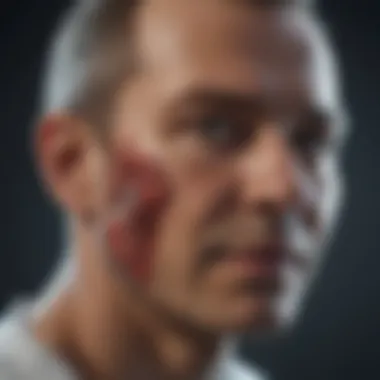
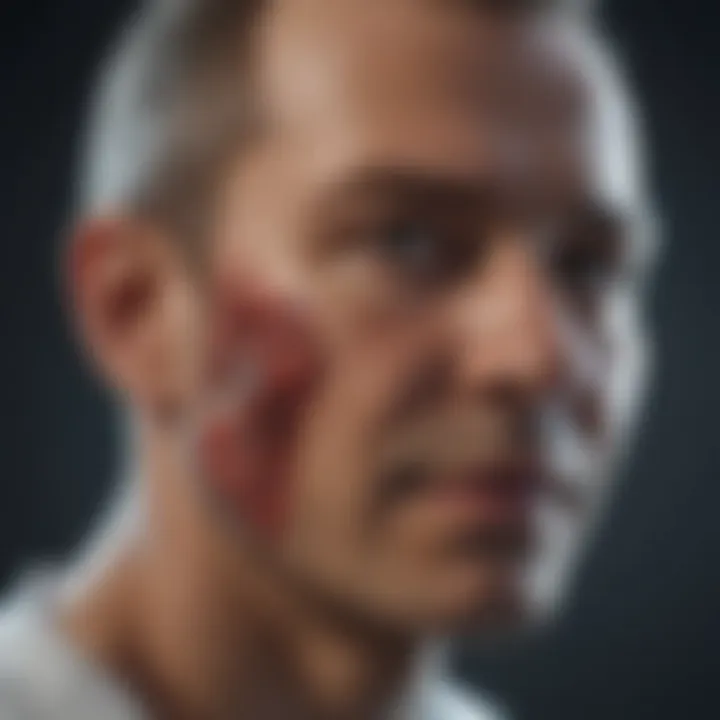
In Medical Education
Textbooks and Learning Materials
Textbooks and other learning resources are critical in the realm of medical education. They often feature diagrams, illustrations, and images that help convey complicated biological principles in a more tangible way. This ensures that students grasp the intricacies of the human body and its functions with greater ease. The specificity of the illustrations—be it anatomical structures or pathological processes—provides clarity that raw text often fails to deliver.
One key characteristic of textbooks featuring medical illustrations is their ability to encapsulate vast amounts of information in a single image. This is particularly beneficial for students who are visual learners. Furthermore, these illustrations can make studying more engaging and less daunting.
However, a notable disadvantage is the risk of illustrations becoming outdated as medical knowledge evolves. Therefore, continual updates are necessary to keep these materials relevant and accurate.
Digital Learning Platforms
Digital learning platforms are revolutionizing how medical education is delivered. With online resources, students and professionals can access an extensive array of illustrations and interactive content at their fingertips. This democratization of information helps bridge gaps in learning, especially for those who might not have access to traditional educational materials.
The interactive features of digital platforms, such as zoomable images and annotations, enhance understanding. Additionally, they allow for immediate updates, which is a huge perk over static textbooks.
However, the challenge remains in ensuring the accuracy of illustrations used within these platforms. Without proper oversight, there is a risk of disseminating incorrect information, which could have significant implications for education and practice.
In Research
Visual Data Representation
In the field of research, visual data representation is a powerful tool that highlights trends and findings through clear graphics. This is of utmost importance for researchers who need to present complex data to varied audiences, including those not deeply versed in the specifics of the field. By transforming dense numerical data into visual formats, researchers can effectively communicate their discoveries and bolster their conclusions.
One distinguishing feature of visual data representation is its ability to summarize large datasets into easily understandable graphics, like graphs, charts, and diagrams. This enhances the overall impact of the research presented.
On the flip side, an over-reliance on visuals can lead to oversimplification, where important nuances may be lost. It is crucial to find that perfect balance between clarity and depth.
Illustration in Published Studies
Illustration in published studies serves as a vital element to complement the textual components of scientific articles. These illustrations are often pivotal in highlighting key findings, methodologies, or anatomical specifics, allowing readers to visualize what the text explains.
The presence of illustrative materials can significantly increase the readership and understanding of published research. It provides a tactile, visual experience of the findings, which often leads to better retention of information.
However, one has to tread carefully when incorporating illustrations, as poorly executed graphics can obscure rather than illuminate the intended message. Thus, precision and artistry must go hand in hand to create effective scientific communication.
In Clinical Practice
Patient Communication
Effective patient communication is paramount in clinical settings, where understanding can directly impact treatment outcomes. Medical illustrations play a significant role in demystifying complex medical concepts for patients.
Medical illustrators create visuals that can be shared with patients, explaining conditions, procedures, or anatomy, which greatly aids comprehension. The key characteristic of this application is its capacity to foster a better patient-provider relationship by ensuring that patients are informed participants in their care.
Despite its many benefits, challenges remain. Not every patient responds to visual aids in the same way; some may find them confusing rather than helpful. Thus, tailoring the approach to the individual patient's needs is essential.
Surgical Planning
Surgical planning is another critical application where medical illustration shines. Surgeons utilize detailed illustrations to map out complex procedures, ensuring every step is well understood before the scalpel touches the skin. In this context, the illustrations serve a dual purpose: they not only guide the surgical team but also reassure patients by visually explaining what to expect.
One of the unique elements of surgical planning illustrations is their precision. They must accurately represent anatomical details and surgical approaches, which is instrumental in minimizing risks during procedures.
However, the reliance on such illustrations also raises the question of adaptability; surgery is dynamic, and real-time fluctuations often require immediate alterations that may not reflect illustrated plans. This calls for an experienced team able to navigate both visual evidence and practical adaptability.
Technological Advancements
In the realm of medical illustration, technological advancements have revolutionized how we convey complex medical information. The marriage of technology and art has opened doors that were previously, at best, ajar. It offers not only efficiency but also enhanced capabilities in visual representation. As we delve into this topic, we recognize that these advancements are not merely tools but have become essential to the practice itself.
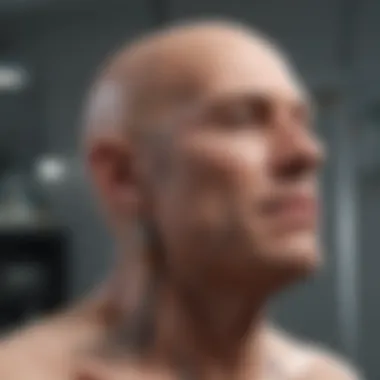
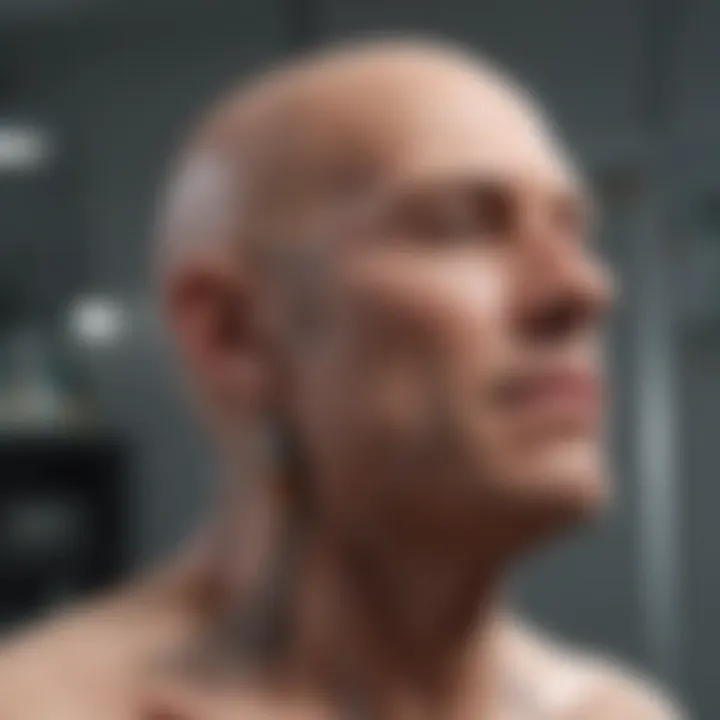
Digital Illustration Techniques
Digital illustration techniques breathe new life into medical visuals. Unlike traditional methods that might involve physical mediums, digital tools provide flexibility and precision. Here are some notable aspects:
- Versatility: Using software like Adobe Photoshop and Corel Painter, medical illustrators can create images that can easily be modified. This adaptability allows for swift changes, whether it’s altering colors to indicate different biological states or revising structures to clarify anatomical features.
- Increased Detail: High-resolution images can be produced, allowing for intricate details that enhance understanding. Small structures like neurons or capillaries can be depicted with unprecedented clarity, making them invaluable for educational purposes.
- Integration of Multimedia: Digital platforms allow for the integration of animations and interactive elements. A static image can evolve into an interactive model where students or patients can explore different perspectives, enhancing engagement and understanding.
The ramifications of these digital techniques extend beyond mere aesthetics; they affect how effectively information is retained and comprehended.
3D Visualization Methods
3D visualization is another game-changer in medical illustration, taking representation to a three-dimensional canvas where concepts gain depth. This technology is not just about aesthetics; its importance in pedagogy and practice can’t be overstated:
- Realistic Comprehension: Models created through 3D visualization aid in understanding complex systems. For instance, the heart, with its intricate network of blood vessels, can be viewed from various angles, helping to solidify one’s grasp of its anatomy and function.
- Hands-on Experience: Technologies such as 3D printing allow for physical models that healthcare professionals and students can manipulate. This tactile engagement can clarify concepts that may be lost in a two-dimensional image.
- Enhanced Surgical Planning: In surgical environments, 3D models facilitate better preoperative planning. Surgeons can visualize the anatomy of a patient in detail before entering the operating room, making them better prepared for what lies ahead.
"The impact of these technological advancements in medical illustration goes beyond the visual aesthetic; they're about accuracy in representation."
It’s clear that both digital illustration techniques and 3D visualization methods significantly influence the effectiveness of medical communication, making them integral to education, research, and clinical practices. As we stride forward, it is essential to keep pace with these advancements, ensuring that they serve the highest standards of clarity and ethical representation in the medical field.
Ethical Considerations
The practice of medical illustration inherently walks a fine line, where the realms of artistry and ethics intersect deeply. The ethical fabric of medical illustrations is essential, dictating how accurate and respectful representations are crafted. In the medical field, illustrations serve not just as visual aids, but as powerful narratives that inform and educate, making it crucial that they uphold a high standard of integrity. Without these ethical considerations, the risk of misunderstanding could lead to serious consequences within both education and clinical practice.
Accuracy and Representation
Accuracy is the cornerstone of effective medical illustration. When artists translate complex biological systems into visual formats, they must do so meticulously. Misrepresentations can lead to a fundamental misunderstanding of human anatomy or pathology, undermining the very purpose of the illustration itself. It’s like dropping a stitch in a finely knitted sweater; a tiny mistake can unravel the entire design.
For medical illustrators, thorough knowledge of anatomy, physiology, and the intended audience is crucial. Take, for example, a graphic showing surgical procedures. If the illustration inaccurately depicts a specific anatomical structure, it can mislead students or even professionals during critical learning moments. Hence, accuracy isn't simply a preference; it’s a responsibility.
- Key elements affecting accuracy include:
- Understanding of the subject matter.
- Collaboration with medical professionals.
- Continuous updates to align with the latest medical discoveries.
The call for precision extends beyond just individual pieces. A cohesive body of work promotes trust—trust that the viewer will receive credible information.
Cultural Sensitivity
Cultural sensitivity in medical illustration represents another layer of ethical importance. Imagery can resonate differently across various cultures; what feels respectful in one context might be deemed offensive in another. Therefore, it’s imperative that illustrators navigate this landscape with care.
Illustrations often encapsulate complex medical conditions or procedures that might evoke strong feelings. By recognizing the diverse backgrounds of patients and practitioners, medical illustrators can craft visuals that are not only informative but also culturally respectful. For instance, certain colors or depictions of human figures are interpreted differently across cultures, and failing to account for these differences can create a rift between professionals and patients.
- Strategies for enhancing cultural sensitivity include:
- Engaging with diverse groups during the planning and design stages.
- Considering culturally appropriate imagery and symbolism.
- Revisiting illustrations for broader appeal and respectfulness.
Ethical considerations in the realm of medical illustration ensure that both accuracy and cultural respect are not mere afterthoughts, but foundational principles. By prioritizing these aspects, the field can continue to bridge the gap between art and science effectively.
The Impact of Medical Illustration
The impact of medical illustration is profound and multifaceted, serving as a crucial linchpin between complex scientific ideas and accessible understanding. In a world where medical knowledge is expanding at an unprecedented pace, clear communication becomes paramount. Medical illustrators do not merely create aesthetically pleasing visuals; they transform intricate medical concepts into digestible imagery that resonates with both professionals and the public. Below, the importance of medical illustration is dissected through three significant lenses: enhancing understanding, facilitating communication, and improving patient education.
Enhancing Understanding of Complex Concepts
Medical illustration enhances comprehension of complex biological phenomena in ways that textbooks often fail to capture. Visual representations act as cognitive aids, bridging the gap between abstract concepts and tangible understanding. For instance, consider the intricate processes of cellular division. A well-crafted illustration can depict each phase of mitosis with breathtaking clarity, helping students and professionals grasp the sequence of events much more effectively than through words alone.
Illustration often allows for a greater depth of understanding. Three-dimensional modeling, for example, gives students a chance to interact with complex structures like the human brain. By viewing it from various angles, learners can more easily appreciate the spatial relationships between different regions, which is crucial for specializations such as neurosurgery. This visualization enhances retention, enabling professionals to recall critical information in high-pressure situations like surgical operations.
Facilitating Communication Among Professionals
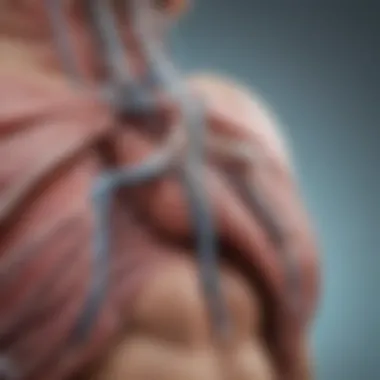
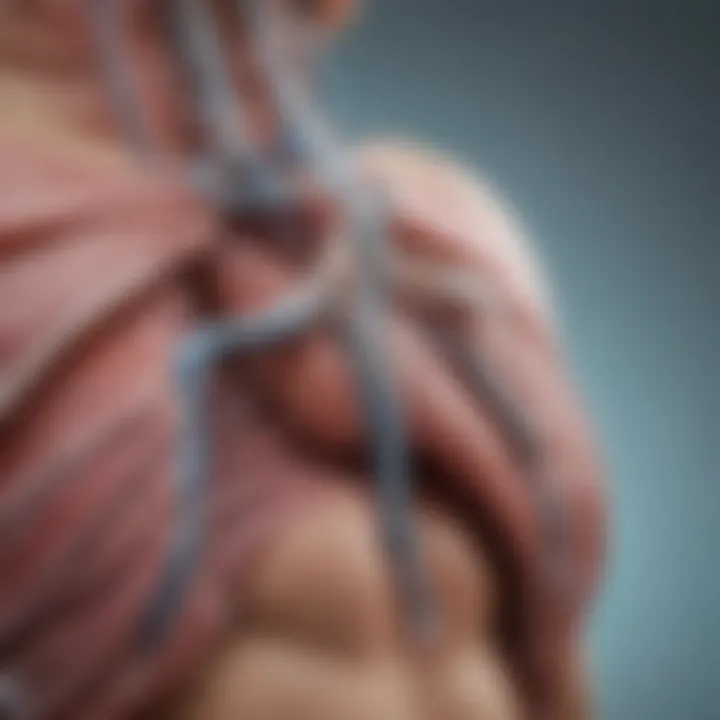
In the realm of medicine, where precision is paramount, medical illustration serves as a universal language that transcends barriers. By using visuals, healthcare professionals can communicate complex procedures and concepts effectively. For instance, a detailed anatomical drawing can clarify the exact locations of lesions or anomalies in diagnostic imaging, making surgical planning more precise.
Moreover, these illustrations can be instrumental in interdisciplinary collaboration. Medical illustrators produce graphics that can be easily understood by both clinicians and researchers. When discussing a novel treatment method, a visual representation can aid in bridging differences in terminology or understanding between fields such as biology, pathology, and surgery. This collaborative aspect of medical illustration fosters a culture of synergy and collective problem-solving within the medical community.
Improving Patient Education
Patient education is another critical facet where medical illustration shows its worth. When patients are involved in their healthcare, they tend to have better outcomes. Illustrative guides can make complex medical terminologies more palatable. For example, using illustrations to describe a surgical procedure helps demystify what will happen, reducing anxiety and fostering a sense of empowerment.
Commonly used in informational brochures, these visuals can demystify everything from the anatomy of a heart to the steps involved in a treatment plan. This approach takes into account that many patients might lack a medical background, helping to level the playing field.
"A picture is worth a thousand words," rings especially true in medical contexts where clear visuals can significantly improve patient compliance and overall health literacy.
In summary, the impact of medical illustration transcends mere aesthetics; it serves as a foundational tool for education and communication. Whether it's aiding comprehension, enhancing professional dialogue, or empowering patients, the role of medical illustration is vital in bridging the traditional divide between art and science.
Future of Medical Illustration
The future of medical illustration is a vibrant and pivotal area poised for growth and innovation. As the intersection of art and science continues to evolve, medical illustrators find themselves on the frontlines of new developments. With technology advancing at breakneck speed, the tools and techniques available for visualizing the human body and medical concepts are becoming more sophisticated. The implications of these innovations have far-reaching effects on education, research, and clinical practice.
One significant shift is the increasing use of augmented reality (AR) and virtual reality (VR) in medical illustration. These immersive technologies are transforming how we visualize anatomy, allowing medical students and professionals to interact with 3D models. Instead of just looking at diagrams, they're able to engage with realistic representations that can enhance understanding significantly. For instance, AR can overlay digital anatomy on a real-world view, making it easier to grasp complex spatial relationships within the body, particularly during surgical planning.
"With the integration of augmented and virtual reality, students no longer just study images; they can step inside their learning. This practical involvement could reshape the future of medical education dramatically."
Trends in Medical Visualization
As we peer into the future, several trends stand out, shaping the practice of medical illustration:
- Increased Personalization: Tailoring illustrations to individual patient cases is gaining traction. By customizing visuals based on a patient’s unique anatomy or medical condition, healthcare professionals can improve communication and provide clearer explanations.
- Collaboration with AI: Artificial intelligence is beginning to play a role in medical illustration. AI can analyze vast datasets to inspire designs based on the latest clinical knowledge, thus offering artists fresh insights into their work.
- Integration of Data Visualization: The shift towards data-driven insights means medical illustrators will increasingly need to incorporate statistical and graphical representations of data into their work, allowing complex concepts to be conveyed in more digestible forms.
These trends not only enhance practical applications but also indicate a growing recognition of the importance of visual literacy in healthcare communication.
Education and Workforce Development
Educating the next generation of medical illustrators is critical for future growth. As new tools and technologies emerge, there is a pressing need to integrate these advancements into educational programs. Medical illustration programs must adapt curriculum to include not only traditional illustration techniques but also 3D modeling, AR, and VR skills.
Additionally, the workforce development aspect cannot be overlooked. The demand for skilled medical illustrators is on the rise. Organizations must create pathways for professionals already in the field to upgrade their skills, especially regarding technological advancements. Workshops, online courses, and collaborative projects between institutions and healthcare organizations can facilitate this continuous learning.
- Key Focus Areas for aspiring students might include:
- Mastering digital tools and software specific to illustration.
- Understanding human anatomy from both artistic and medical perspectives.
- Developing skills in visual data representation for research presentations.
Overall, the future of medical illustration is not just about maintaining artistic integrity but also about embracing continuous change. By preparing learners and professionals to adapt to new tools and methodologies, the field can ensure that it continues to meet the ever-evolving needs of healthcare communication.
Finale
In the grand tapestry of medicine and art, the conclusion of this article emphasizes the profound importance of medical illustration as an essential bridge between these two realms. Understanding the intersection where artistry meets scientific accuracy, we see a critical contribution that not only enhances education and practice but also enriches the overall healthcare experience.
Summary of Key Insights
Medical illustration is not a mere embellishment; it's a necessity. Throughout this article, we’ve shed light on several pivotal insights:
- Integration of Art and Science: Medical illustrators transform complex biological concepts into clear, visually engaging materials, aiding both understanding and retention.
- Role in Education: The influence of medical illustration in medical education is undeniable. From textbooks to digital platforms, these visual aids serve as invaluable tools for learners.
- Impact on Patient Communication: Visual representations empower patients to understand their medical conditions better and engage more thoroughly with their healthcare providers.
- Technological Advancements: The ongoing evolution in digital tools and 3D visualization pushes the boundaries of what's possible in depicting intricate biological systems.
These insights lay the groundwork for discussing how medical illustration fosters superior communication and understanding across multiple audiences, from students to professionals to patients.
The Importance of Continued Innovation
As medical practices and technologies advance, the role of medical illustration must evolve too. The importance of continual innovation cannot be overstated. Here are some key aspects to consider:
- Emerging Technologies: Keeping pace with tools such as augmented reality and virtual reality will create new layers of engagement in medical education and patient care.
- Adapting to Changes in Medicine: As medical knowledge expands, illustrations must adapt to encompass new findings, treatments, and an ever-changing healthcare landscape.
- Focus on Accessibility: Ensuring that illustrative materials are accessible and culturally sensitive to diverse populations is paramount for effective communication.
Continued innovation in medical illustration promises to enhance understanding and maintain relevance in a field that's continually evolving. As we step into a future driven by technology and an increasing emphasis on patient-centered care, the role of the medical illustrator will remain vital in bridging the gap between art and science.
"Art is the most beautiful of all lies; science is the most perfect of all truths."
Embracing this philosophy is essential for driving the discipline forward while preserving its integrity and importance in medical contexts.







